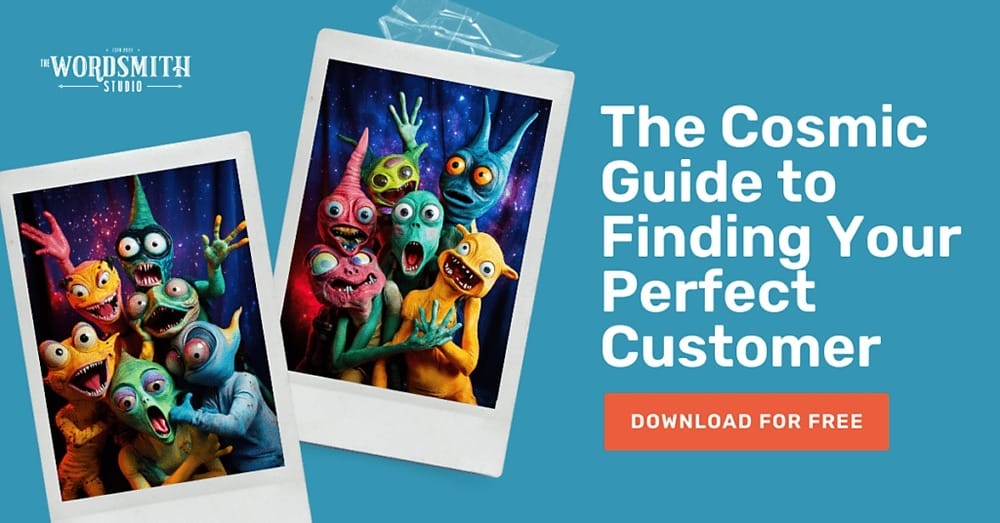Ever feel like you’re throwing marketing messages into the void, hoping someone—anyone—will bite? It’s frustrating, right? Like trying to have a heart-to-heart with a room full of strangers who may or may not be listening.
That’s where a solid customer profile comes in. When you truly understand your audience—what they need, what they struggle with, and what makes them say, “Finally, someone gets me!”—everything about your business becomes easier. Writing compelling content? A breeze. Selling without feeling sleazy? No problem. Creating offers that people actually want to buy? Yes, please.
Yet, so many entrepreneurs skip this step or make one of these common mistakes:
- ❌ Guessing at who their audience is instead of researching.
- ❌ Targeting “everyone” and ending up with messaging that speaks to no one.
- ❌ Gathering customer data but not actually using it to refine their marketing.
If any of that sounds familiar, don’t worry—you’re about to change that. In this guide, we’ll walk through how to research your audience, organize that information, create a customer profile, and actually use it to attract the right people to your business. Let’s dive in.
Step 1: Gather Meaningful Customer Data
Before creating a profile, you need real, actionable insights. Here’s where to look:
Customer Interviews: Get the Story Straight from Them
Nothing beats hearing from your audience directly. Set up casual, structured interviews with past or potential clients to understand their experiences, pain points, and desires.
🔹 Questions to ask:
- What was going on in your life/business when you started looking for a solution like mine?
- The biggest challenge you face in this area?
- Other solutions have you tried, and why didn’t they work?
- What would a perfect solution look like to you?
👉 Pro Tip: Keep it conversational. The more comfortable they feel, the more useful insights you’ll get.
Surveys & Questionnaires: Scale Your Insights
If one-on-one interviews aren’t an option, surveys are your best friend. Use tools like Google Forms or Typeform to collect broader insights from your audience.
🔹 Survey Best Practices:
- Keep it short and focused (under 10 questions is best!).
- Use multiple-choice questions for easy analysis, but include one or two open-ended ones for deeper insights.
- Offer a small incentive (discount, freebie, or exclusive content) to boost participation.
Social Listening: See What They’re Already Saying
Your audience is already talking about their needs, struggles, and wishes—you just need to tune in.
🔹 Where to Listen:
- Facebook Groups & Reddit threads in your niche
- Instagram & LinkedIn comments
- Product reviews (yours or competitors’)
👉 Look for patterns. Are there frustrations or desires that pop up repeatedly? These are gold mines for refining your messaging or desires that pop up repeatedly?

Step 2: Analyze & Organize Your Data
Now that you’ve collected insights, make sense of it all.
Use Data Analysis Tools
If you have access to analytics, CRM software, or survey tools, use them to spot trends.
🔹 Recommended Tools:
- Google Analytics – Tracks website visitor behavior
- Facebook Audience Insights – Helps understand demographics
- CRM Systems (HubSpot, Dubsado, etc.) – Stores customer data & interactions
Identify Common Themes
Look for recurring pain points, goals, and objections.
🔹 Example Findings:
- Many customers struggle with confidence in their messaging.
- They’ve tried DIY approaches but feel overwhelmed.
- They want a process that makes content creation feel easier.
👉 These insights tell you what to highlight in your marketing!with your core audience—the people you most want to attract.
Step 3: Create a Customer Profile That Actually Helps You Sell
Now that you’ve done the research, it’s time to create a clear, actionable customer profile.
Outline Your Customer’s Key Details
- Name: Give them a name (it makes them feel real!)
- Age Range: Helps tailor messaging & examples
- Industry/Niche: Are they a coach, creative, or product-based entrepreneur?
- Goals: What are they trying to achieve?
- Challenges: What’s getting in their way?
- Buying Triggers: What makes them decide to take action?
- Objections: What fears or doubts do they have before buying?
🔹 Example Customer Profile: 💡 Meet Aligned Anna
- Age: 35-50
- Business Type: Creative entrepreneur scaling her online presence
- Biggest Challenge: Wants to sound authentic in her marketing but feels unsure how to translate her ideas into words
- Buying Trigger: She’s tired of struggling with content and is ready for a simple, done-for-you solution
- Objections: Worried she won’t be able to customize a template or that hiring a writer won’t capture her true voice
👉 Use this profile to guide all your content & offers!keting. Let’s dive into that next.

Step 4: Apply Your Research to Strengthen Your Marketing
Your research isn’t just for internal notes—it should actively shape your marketing. Here’s how:
Refine Your Messaging
- Use your audience’s exact words in your website copy and social media captions.
- Address their objections head-on (“Worried a copy template won’t sound like you? I’ll show you how to customize it effortlessly.”)
Create Targeted Content
- Write blog posts that answer their top questions.
- Offer freebies tailored to their pain points (checklists, workbooks, or swipe files!).
- Send emails that feel like they’re speaking directly to them.
Adjust Your Offers Based on Their Needs
- Do they prefer step-by-step guidance? Create a course.
- Want something quick and easy? Offer templates.
- Need full support? A done-for-you service is the best fit.
🚀 Example: If your audience keeps saying they struggle with writing emails, offer a product like The Essential Email Kit for Entrepreneurs (hey, that sounds familiar!).
Take Action: Start Researching Your Audience Today
Customer research isn’t just a one-time exercise—it’s an ongoing practice that keeps your business aligned with the people you serve.
👉 Not sure where to start? Decode Your Audience: A Cosmic Guide to Finding Your Perfect Customer walks you through research strategies, analysis techniques, and how to apply insights to your marketing.
💡 Grab your copy today and start creating marketing that actually connects. 💫
Frequently Asked Questions
What is a customer profile example?
A customer profile is a snapshot of your ideal client. Example: Creative Carly, a 38-year-old business coach, struggles with writing sales emails and wants a simple, authentic way to market her services. This helps you craft messaging that speaks directly to her needs.
How do I make a customer profile?
1️⃣ Research your audience (past customers, surveys, social media).
2️⃣ Identify common struggles, goals, and buying habits.
3️⃣ Organize this into a simple profile outlining their pain points, desires, and personality.
4️⃣ Use it to guide your content, offers, and marketing strategy.
How to write a customer service profile?
A customer service profile defines how your ideal customer interacts with your business. Focus on:
✔ Their biggest frustrations.
✔ What they value in support (fast replies, detailed answers).
✔ Preferred communication (email, chat, phone).
✔ The tone that resonates with them (warm, professional, friendly).
What does an ideal customer profile look like?
An ideal customer profile (ICP) highlights your best-fit customers—those most engaged and profitable. It includes:
📌 Basic details (age, job, location).
📌 Pain points and goals.
📌 Buying behavior.
📌 Preferred platforms (social media, email, etc.).
It helps you attract and serve the right people more effectively.





